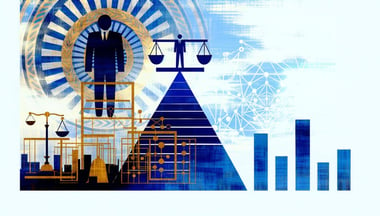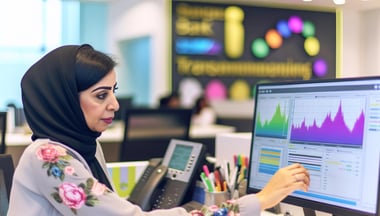Drug Trafficking Meaning and Its Connection with Money Laundering
Drug trafficking, a dangerous and illegal trade, is causing immense harm worldwide. Criminals smuggle huge amounts of drugs. According to estimates, $32 billion worth of drugs are smuggled across countries. This affects millions of lives globally. This data, gathered from sources such as the United Nations Office on Drugs and Crime (UNODC), paints a grim picture of the scale of this problem.
In this article, we will explore what is drug trafficking meaning. Furthermore, we’ll also explore how it is linked to money laundering. Let's uncover the truth behind drug trafficking and learn how we can work together to make our communities safer.
Key Takeaways
- Drug Trafficking's Global Impact: With an estimated $32 billion in drugs smuggled annually, drug trafficking poses a major international challenge, affecting millions of lives and requiring global efforts to combat it.
- Connection to Money Laundering: The massive profits from drug trafficking are often laundered, with criminals using sophisticated techniques to disguise illegal gains as legitimate funds.
- Role of International Organizations: Agencies like UNODC, INTERPOL, WCO, DEA, and OAS play crucial roles in fighting drug trafficking and money laundering through intelligence sharing, training, and international cooperation.
- Innovative AML Strategies: Advanced AML methods, including AI and ML technologies, are key in detecting and disrupting the financial networks behind drug trafficking.
- Comprehensive Compliance Measures: Financial institutions implement enhanced surveillance, AML screening, CDD, risk assessment models, and behavioral analytics to combat drug trafficking-related money laundering.
What is Drug Trafficking?
Drug trafficking involves the illegal trade, transportation, and distribution of narcotics and controlled substances across international borders and within countries. Economic disparities and lack of employment opportunities in certain regions are among the common causes of drug trafficking.
Illicit activities don't just benefit organized crime. They also harm communities by causing more violence, addiction, and social instability. Global law enforcement agencies have a tough job trying to stop this. So it's crucial to come up with new strategies and work together to tackle the widespread impact of drug trafficking.
Now that you know about drug trafficking meaning, let us discuss the connection between drug trafficking and money laundering.
Drug Trafficking and Money Laundering
Drug trafficking and money laundering form a sophisticated web of criminal activity. The vast profits generated from drug trafficking are often tainted and need to be legitimized through money laundering techniques. Money laundering is the process of camouflaging illegal proceeds as legal funds. This enables criminals to utilize their ill-gotten gains without raising suspicion.
To make their operations successful, drug traffickers use different tactics. They invest in real businesses, get involved in real estate deals, and use financial institutions to move money secretly. Additionally, they employ intricate networks of shell companies, offshore accounts, and intermediaries to obfuscate the origins of their money, making it challenging for authorities to trace. To know how it is done, consider the below scenario.
Imagine a drug trafficking syndicate operating internationally, smuggling narcotics across borders and selling them illicitly. The profits amassed from these illegal activities are substantial but inherently suspicious. To legitimize these funds and integrate them into the legal economy, the criminals’ resort to money laundering techniques.
First, they invest in seemingly legitimate businesses, such as restaurants or retail outlets. By doing this, they blend their unlawfully earned money with the legitimate profits from these businesses. This makes it hard for authorities to tell the difference between legal and illegal income.
Next, the criminals engage in real estate transactions, purchasing luxury properties using the tainted money. These properties serve as assets, and their value appreciates over time, allowing the criminals to increase their wealth while appearing to be legitimate property owners.
Simultaneously, they exploit financial institutions, transferring funds internationally through a complex web of accounts. Offshore accounts and shell companies are established, creating layers of anonymity that makes it difficult for investigators to trace the original source of the funds.
In response to this pervasive issue, governments have enacted stringent laws and regulations. Financial institutions are mandated to implement various measures. This includes thorough customer due diligence, constant transaction monitoring, and reporting any suspicious activities to law enforcement agencies. These regulations enable authorities to detect and thwart money laundering attempts.
International Organizations Against Drug Trafficking
A multitude of international organizations is dedicated to combating drug trafficking, promoting cooperation between nations, and implementing strategies to eradicate this global menace. These organizations are crucial. They help share intelligence, encourage collaboration, and support nations in their efforts to combat crimes related to drugs.
- United Nations Office on Drugs and Crime (UNODC): UNODC takes a multifaceted approach to tackle drug trafficking and money laundering. They provide technical assistance to member states, assisting them in strengthening their legal frameworks, law enforcement capacities, and international cooperation mechanisms.
- INTERPOL: INTERPOL plays a vital role in combating drug trafficking and money laundering by facilitating international police cooperation. They coordinate joint operations, share intelligence, and provide operational support to member countries.
- World Customs Organization (WCO): WCO focuses on strengthening customs administrations globally to intercept drug shipments and combat money laundering. They provide training and technical assistance to customs officers, enhancing their capabilities in detecting concealed narcotics and illicit financial transactions at borders.
- Drug Enforcement Administration (DEA): DEA operates internationally to disrupt and dismantle major drug trafficking organizations. They conduct undercover operations, gather intelligence, and collaborate with foreign law enforcement agencies to target key individuals and networks involved in drug trafficking and money laundering.
- Organization of American States (OAS): OAS focuses on strengthening the institutional capacities of member states to combat drug trafficking and money laundering. They provide technical assistance, policy guidance, and support in developing comprehensive strategies to address the root causes of these issues.
Agencies like the IRS, Federal Reserve, and Treasury. FinCEN, are also at the forefront of combating financial crimes like money laundering. FinCEN, operating under the United States Treasury, utilizes advanced artificial intelligence technology to analyze Currency Transaction Reports (CTRs). These reports are mandatory filings for individuals receiving cash payments exceeding $10,000.
Combating Drug Trafficking with AML Methods And Technologies
Anti-Money Laundering (AML) methods have become instrumental in the fight against drug trafficking. By using sophisticated analytics, AI and ML, authorities can spot patterns and trace illegal money movements. This helps in breaking up criminal networks. Here are some of the ways to combat drug trafficking with AML methods and technologies.
- Enhanced Surveillance: Financial institutions need to employ advanced monitoring systems. These systems are essential for spotting irregular transactions associated with drug trafficking. They work by identifying deviations from normal customer behavior. These deviations might include large cash transfers or transactions to high-risk nations. When anomalies are detected, swift investigations and corrective measures are initiated by vigilant financial organizations.
- Artificial Intelligence (AI) and Machine Learning (ML): Leveraging advanced AI and ML technologies, financial organizations analyze vast financial datasets. These technologies identify intricate patterns and anomalies indicative of money laundering connected to drug trafficking. By recognizing these red flags, authorities can take prompt action, disrupting criminal networks and safeguarding the integrity of financial systems.
- AML Screening: During onboarding, financial institutions screen applicants rigorously. Conventional matching engines may yield false positives. However, utilizing multi-dimensional algorithms that combine essential entity data with external information enhances the accuracy of matching outcomes. This approach minimizes errors, ensuring precise identification of potential risks related to drug trafficking and money laundering.
- Customer Due Diligence (CDD): Implementation of CDD measures allows businesses and financial institutions to authenticate customer identities. It also assists in evaluating their risk levels. This examination helps in identifying possible money laundering transactions connected to drug trafficking.
- Risk Assessment Models: Financial institutions utilize risk assessment models to detect high-risk customers and transactions susceptible to money laundering. This also includes those associated with drug trafficking. By focusing resources on these risk areas, institutions can focus on combating illicit activities. This, therefore, ensures AML compliance.
- Behavioral Analytics: Financial institutions use behavioural analytics to study customer behaviour. This also helps in detecting anomalies that might indicate involvement in drug trafficking-related money laundering. By understanding typical customer behaviour, deviations from these patterns become apparent. This enables timely intervention and prevention of illicit financial activities.
In conclusion, drug trafficking and money laundering are closely intertwined criminal activities that have significant social and economic consequences. Drug trafficking refers to the illegal production, distribution, and sale of drugs, while money laundering involves disguising the proceeds from these illegal activities to make them appear legitimate. The connection between drug trafficking and money laundering is evident as drug traffickers seek to conceal the vast amounts of money generated from their illicit activities.
By understanding this connection, law enforcement agencies and policymakers can develop effective strategies to disrupt and dismantle drug trafficking networks and prevent the flow of illegal funds. Additionally, raising public awareness about the dangers of drug trafficking and its connection to money laundering is essential in promoting a society free from the harms caused by these criminal activities. Ultimately, by understanding the complexities of drug trafficking and money laundering, we can work towards a safer and more secure future for our communities.
Anti-Financial Crime Compliance with Tookitaki?
Related Terms
Recent Posts

.png?width=250&height=104&name=PNG%20-%20Montserrat%20LOGO%20-%20a%20Thunes%20company%20(White).png)
-1.png?width=200&height=83&name=PNG%20-%20Montserrat%20LOGO%20-%20a%20Thunes%20company%20(White)-1.png)





